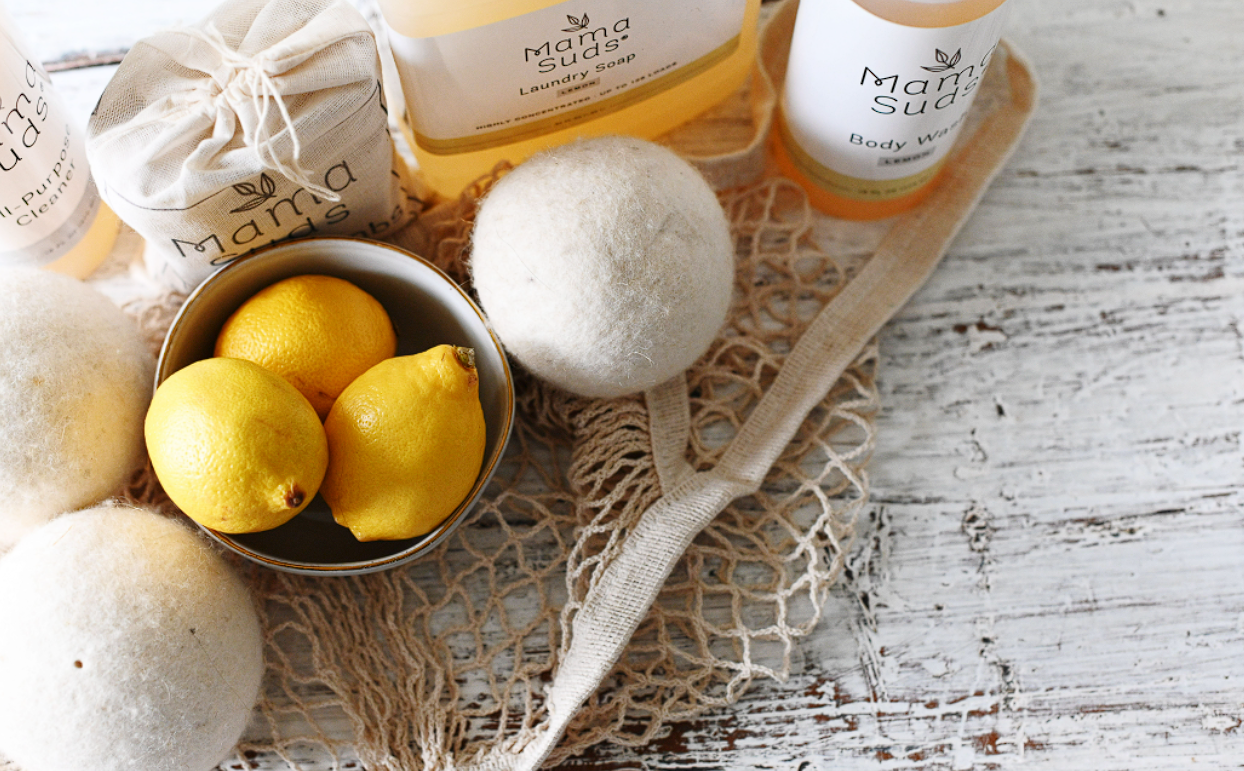
The CleanSuds Blog
Where education and truthful facts are easy to come by.
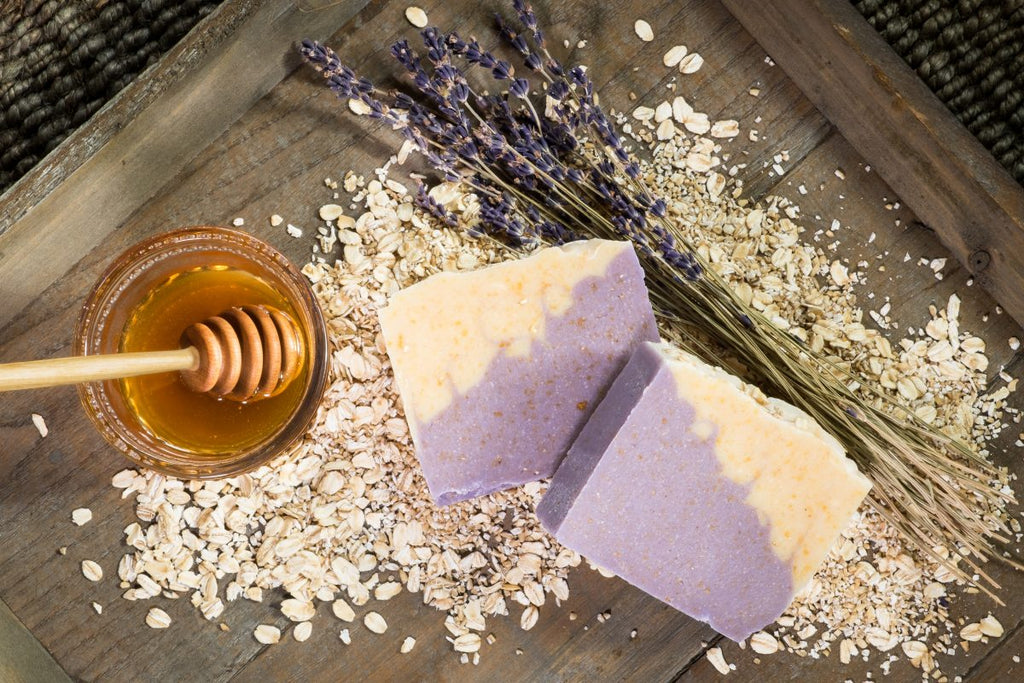
Highlighting Local Ingredients in Soap Making
In recent years, there has been a growing movement towards sustainability and supporting local economies. One area where this shift is particularly evident is in the craft of soap making. By incorporating local, organic ingredients into soap formulations, artisans can create products that are not only beneficial for the skin but also support local farmers and reduce environmental impact. In this post, we’ll explore the benefits of using locally sourced ingredients in soap making and why it’s a practice worth embracing.
The Benefits of Local Ingredients

Supporting Local Economies
When soap makers source ingredients from local farmers and producers, they contribute directly to the local economy. Here’s how:
- Boosting Local Businesses: Purchasing ingredients like olive oil, goat milk, or lavender from nearby farms helps sustain these businesses and fosters a sense of community.
- Creating Jobs: Increased demand for local ingredients can lead to job creation within the community, supporting families and improving livelihoods.
- Encouraging Sustainable Practices: Local farmers often employ sustainable farming methods, which align with the values of eco-conscious consumers and producers.
Reducing Environmental Impact

Using local ingredients in soap making can significantly reduce the carbon footprint associated with production:
- Lower Transportation Emissions: Sourcing ingredients locally minimizes the need for long-distance transportation, thereby reducing greenhouse gas emissions.
- Sustainable Farming Methods: Local, organic farms typically engage in more sustainable practices, such as crop rotation and reduced pesticide use, which help maintain soil health and biodiversity.
- Less Packaging Waste: Local sourcing often means less packaging and fewer resources used in shipping, leading to a reduction in plastic waste and overall environmental impact.
Examples of Local Ingredients in Soap Making
Olive Oil
Olive oil is a staple in many soap recipes due to its moisturizing properties and mild nature. When sourced from local olive groves, it supports regional agriculture and ensures the freshest quality.
Goat Milk
Goat milk is renowned for its creamy texture and gentle exfoliating properties. Local dairy farms producing organic goat milk provide high-quality ingredients while supporting animal welfare and sustainable farming practices.
Lavender
Lavender offers a soothing fragrance and numerous skin benefits. Purchasing lavender from local herb farms supports small-scale growers and ensures that the plants are cultivated without harmful chemicals.
Honey
Honey is a natural humectant, drawing moisture to the skin and providing antibacterial properties. Sourcing honey from local beekeepers not only supports the beekeeping industry but also promotes the health of local bee populations, crucial for pollination and ecosystem balance.
Crafting Soap with Local Ingredients
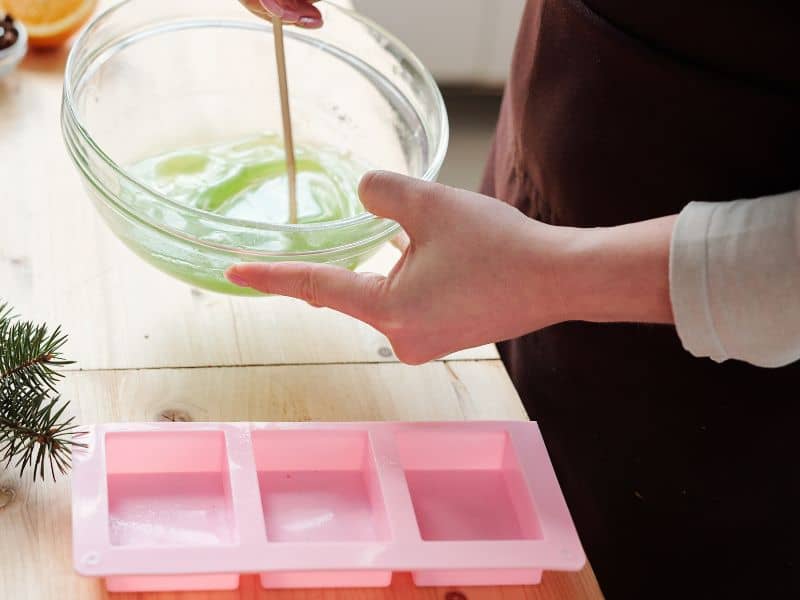
Creating soap with locally sourced ingredients is not just beneficial for the community and the environment; it also enhances the quality and uniqueness of the final product. Here are a few tips for incorporating local ingredients into your soap making:
- Research Local Suppliers: Start by identifying local farms, markets, and producers who offer the ingredients you need. Establish relationships with these suppliers to ensure a consistent and reliable source of high-quality materials.
- Choose Seasonal Ingredients: Take advantage of seasonal produce to create limited-edition soaps that highlight the best of what your region has to offer at different times of the year.
- Transparency and Storytelling: Share the story behind your ingredients with your customers. Highlight the local sources and the benefits of using these ingredients on your labels and marketing materials to build a deeper connection with your audience.
In Conclusion
Incorporating local, organic ingredients into soap making is a powerful way to support local economies, reduce environmental impact, and create high-quality, unique products. By choosing to source ingredients locally, soap makers can contribute to a more sustainable and connected community, fostering a sense of pride and responsibility in their craft. So, the next time you set out to make a batch of soap, consider the local treasures available to you and the positive ripple effects of your choices.

Exploring Essential Oils in Soap Making
• They have unique compositions of chemicals that determine fragrance and therapeutic effects.
• Lavender oil is calming, healing, and adds a fresh floral scent to soaps.
• Tea tree oil is antiseptic, anti-inflammatory, and has a sharp, medicinal aroma.
• Peppermint oil is cooling, invigorating, and gives soaps a crisp minty freshness.
• Eucalyptus oil offers respiratory relief and has a clean camphoraceous scent.
• Rosemary oil enhances mental stimulation and provides a robust herbaceous aroma.
• Lemon oil brightens and purifies with a fresh citrus scent.
• Chamomile oil soothes, aids sleep, and has a sweet fruity fragrance.
• Essential oils enhance soap making with natural fragrances, therapeutic benefits, and aromatherapy benefits.
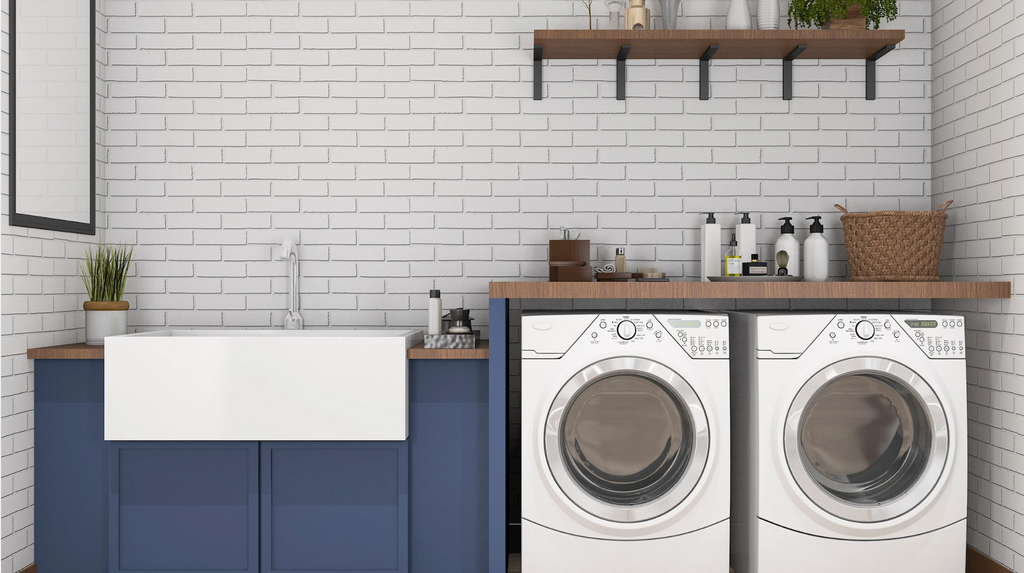
The Ultimate Guide to Finding the Best Clean Laundry Soap for Sparkling Fresh Clothes
Are you tired of laundry soap that leaves residue on your clothes and fails to deliver that sparkling freshness you love? Look no further! In this ultimate guide, we will help you find the best clean laundry soap that will leave your clothes looking and smelling clean.
At MamaSuds, we understand the importance of having clothes that not only look clean but also feel clean. Our mission is to provide you with a laundry soap that tackles even the toughest stains, while still being gentle on your fabrics.
With so many options available on the market, it can be overwhelming to choose the right laundry soap for your needs. That's why we have done the research for you. In this guide, we will break down the key factors to consider when selecting a laundry soap, such as ingredients, fragrance options, and eco-friendliness.
So, whether you're looking for a laundry soap that is free of harsh chemicals, has a delightful fragrance, or is environmentally conscious, we've got you covered. Say goodbye to dingy clothes and hello to a fresh, clean wardrobe with our ultimate guide to finding the best clean laundry soap.
The importance of using clean laundry soap
Using clean laundry soap is crucial for maintaining the longevity and quality of your clothes and washing machine. Conventional laundry soaps often contain harsh chemicals and synthetic fragrances that can damage fabrics, cause skin irritation, and leave behind residue that dulls the appearance of your clothes and decreases the life of your machine.
When you invest in high-quality, clean laundry soap, you're not only protecting your clothes but also your health and the environment. Clean laundry soaps are formulated with gentle, natural ingredients that are effective at removing dirt, grease, and stains without compromising the integrity of your fabrics. They also often come with eco-friendly and biodegradable properties, making them a more sustainable choice.
By using clean laundry soap, you can enjoy the benefits of brighter, clean-smelling clothes that last longer. This not only saves you money in the long run but also reduces your environmental impact by minimizing the need for frequent clothing replacements. Investing in a clean laundry soap is an easy way to make a positive difference in your daily life and contribute to a healthier, more sustainable future.
Understanding the ingredients in laundry soap
When it comes to choosing the best clean laundry soap, it's important to understand the ingredients that go into the formulation. Laundry soaps can contain a wide range of chemicals, some of which can be harmful to both your clothes and your health.
The primary active ingredients in laundry soap are surfactants, which are responsible for lifting and removing dirt, grease, and stains from your clothes. Common surfactants used in conventional laundry soaps include sodium lauryl sulfate (SLS) and sodium laureth sulfate (SLES), which can be harsh and drying on fabrics and skin.
At MamaSuds we use REAL soap as our surfactant. It's imperative that when using real soap as a laundry product it doesn't leave a residue. That's why we make our Castile Soap in house to ensure that no extra fat is used in our formulation.
In addition to surfactants, laundry soaps may also contain optical brighteners, fragrances, and other additives. Optical brighteners, for example, are chemicals that make your clothes appear whiter by reflecting light, but they can also be harsh on fabrics and may cause skin irritation. Synthetic fragrances, on the other hand, can contain a cocktail of chemicals that can trigger allergic reactions and contribute to indoor air pollution.
Common harmful ingredients to avoid in laundry soap
When selecting a clean laundry soap, it's important to be mindful of the ingredients and avoid those that can be harmful to your health and the environment. Some of the common harmful ingredients to steer clear of include:
- Sodium Lauryl Sulfate (SLS) and Sodium Laureth Sulfate (SLES): These surfactants are known for their harsh, drying effects on skin and can also be damaging to fabrics over time.
- Optical Brighteners: These synthetic chemicals are used to make clothes appear whiter, but they can be irritating and may contribute to environmental pollution.
- Synthetic Fragrances: Fragrances can contain a complex mixture of chemicals that can trigger allergic reactions and contribute to indoor air pollution.
- Phosphates: These chemicals can be harmful to aquatic ecosystems and contribute to the eutrophication of waterways.
- PVA (polyvinyl alcohol): Popular in pods and sheets and they dissolve into microplastics which are released into our water system, eventually finding its way into our bodies and aquatic life.
By avoiding these harmful ingredients and opting for clean, natural alternatives, you can protect your clothes, your skin, and the environment while still enjoying the benefits of a sparkling clean wardrobe.
Factors to consider when choosing the best clean laundry soap
When it comes to selecting the best clean laundry soap for your needs, there are several key factors to consider. By taking the time to evaluate these factors, you can ensure that you find a laundry soap that not only cleans your clothes effectively but also aligns with your personal values and environmental concerns.
- Ingredients: As mentioned earlier, it's crucial to carefully examine the ingredient list and avoid harsh chemicals like SLS, SLES, and synthetic fragrances. Look for clean, natural ingredients that are gentle on fabrics and skin, such as plant-based surfactants, essential oils, and biodegradable components.
- Fragrance: If you prefer a fresh, clean scent, consider laundry soaps that use natural essential oils. Avoid products with synthetic fragrances, which can be irritating and contribute to indoor air pollution.
- Eco-Friendliness: Look for laundry soaps that are eco-friendly and sustainable, with certifications such as Leaping Bunny. These products are typically made with renewable, biodegradable ingredients and have a lower environmental impact.
- Effectiveness: Ensure that the clean laundry soap you choose is effective at removing tough stains, grease, and dirt without compromising the quality of your fabrics. Read reviews and consider trying out a few different options to find the one that works best for your needs.
- Skin Sensitivity: If you or any members of your household have sensitive skin, look for laundry soaps that are hypoallergenic and gentle, free of potential irritants like perfumes and dyes.
- Compatibility with Washing Machines: Some clean laundry soaps may be better suited for high-efficiency (HE) washing machines, so be sure to check the product specifications to ensure compatibility.
By considering these factors, you can find the best clean laundry soap that not only delivers sparkling clean clothes but also aligns with your personal and environmental values.
How to properly use clean laundry soap for optimal results
Using clean laundry soap effectively can help ensure that your clothes come out sparkling clean and fresh every time. Here are some tips for properly using clean laundry soap:
- Follow the Dosage Instructions: Clean laundry soaps are often more concentrated than conventional detergents, so it's important to follow the recommended dosage instructions on the packaging. Using too much can lead to excessive suds and residue, while using too little may not effectively clean your clothes.
- Adjust for Load Size and Soil Level: The amount of laundry soap you use should be adjusted based on the size of your load and the level of soil or stains on your clothes. Larger loads or heavily soiled items may require a slightly higher amount of soap.
- Use Warm or Hot Water: Clean laundry soaps work best when used with warm or hot water, as this helps to activate the cleaning agents and lift dirt and stains more effectively.
- Pre-treat Stains: For tough stains, it's a good idea to pre-treat the affected areas with a small amount of clean laundry soap or a dedicated stain remover before washing. This can help to break down the stain and make it easier to remove.
- Avoid Overloading the Washing Machine: Overloading your washing machine can prevent the clean laundry soap from circulating properly and may lead to incomplete cleaning. Be sure to follow the manufacturer's recommendations for load size.
- Use the Appropriate Cycle: Different types of fabrics and soil levels may require different wash cycles. Consult your washing machine's manual and the care instructions on your clothing to determine the best cycle for your clean laundry soap.
By following these tips, you can ensure that your clean laundry soap is used effectively, resulting in sparkling clean clothes that last longer and feel fresher.
DIY recipes for making your own clean laundry soap
For those who are interested in taking a more hands-on approach to their laundry routine, making your own clean laundry soap can be a rewarding and cost-effective option. Here are a couple simple DIY recipes to try.
When making your own clean laundry soap, be sure to use high-quality, natural ingredients and store the finished product in an airtight container to maintain its effectiveness. Additionally, always test a small batch first to ensure that the recipe works well with your washing machine and clothing.
Conclusion: Finding the best clean laundry soap for your needs
In conclusion, finding the best clean laundry soap for your needs is a crucial step in maintaining a fresh, clean wardrobe and reducing your environmental impact. By understanding the importance of using clean laundry soap, familiarizing yourself with the key ingredients to avoid, and exploring the different types of clean laundry soap options available, you can make an informed decision that aligns with your personal and environmental values.
When selecting the best clean laundry soap, consider factors such as ingredient transparency, fragrance preferences, eco-friendliness, and effectiveness in removing tough stains and odors. Refer to the reviews and recommendations provided in this guide to help you narrow down your options and find the perfect clean laundry soap for your household.
Remember, the benefits of using a clean laundry soap go beyond just sparkling clean clothes. By investing in high-quality, natural products, you're also contributing to a healthier, more sustainable future. So, take the time to explore the clean laundry soap options available and find the one that works best for you and your family.

How to Clean Quartz Countertops
A Guide to Keeping Your Quartz Surfaces Sparkling with MamaSuds
Quartz countertops are a beautiful addition to any kitchen or bathroom. They offer the elegance of natural stone with the durability and low maintenance of engineered surfaces. But just like any other surface in your home, quartz countertops need a little TLC to keep them looking their best. Here’s how you can keep your quartz countertops sparkling clean using MamaSuds products.
Why Quartz Needs Special Care
Quartz is non-porous, which means it resists stains and doesn’t harbor bacteria. However, it can still accumulate dirt, grime, and oils from daily use. While quartz is tough, it can be sensitive to harsh chemicals, so it's important to use the right cleaning products that are gentle yet effective.Step 1: Daily Cleaning with MamaSuds All-Purpose Cleaner
For daily maintenance, you’ll want to keep your countertops free from crumbs, spills, and other residues. MamaSuds All-Purpose Cleaner is perfect for this task. It’s made with non-toxic, biodegradable ingredients, making it safe for your family and the environment.How to Use: Simply spray the MamaSuds All-Purpose Cleaner directly onto the countertop surface. Use a soft, damp cloth to wipe away any debris. For tougher spots, let the cleaner sit for a few minutes before wiping it away. This cleaner is gentle enough for daily use and will leave your quartz looking spotless without any streaks or residue.
Step 2: Deep Cleaning with MamaSuds Castile Soap
Even with regular cleaning, your quartz countertops may occasionally need a deeper clean to remove stubborn grease or stuck-on grime. MamaSuds Castile Soap is up to the task! This versatile, plant-based soap is safe for all surfaces, including quartz.How to Use: Mix a few drops of MamaSuds Castile Soap with warm water in a bowl or bucket. Dampen a soft cloth or sponge with the soapy water and gently scrub the countertop. Focus on any areas with visible stains or buildup. Rinse the cloth or sponge with clean water and wipe down the countertop to remove any soap residue. Finally, dry the surface with a clean towel to restore its shine.
Step 3: Preventing Stains and Damage
While quartz is resistant to most stains, certain substances like wine, coffee, or acidic foods can cause discoloration if left too long. To prevent stains and damage:Wipe Up Spills Immediately: Use the MamaSuds All-Purpose Cleaner to quickly clean up any spills. The faster you act, the less likely the spill will cause a stain.
Use Trivets and Cutting Boards: Protect your countertops from heat and scratches by always using trivets for hot pans and cutting boards for chopping.
Avoid Harsh Chemicals: Stay away from bleach, ammonia, and other abrasive cleaners. MamaSuds products are designed to be gentle on your surfaces while still providing powerful cleaning action.
Step 4: Polishing Your Countertops
To give your quartz countertops that extra shine, you can polish them using a soft cloth. While MamaSuds doesn’t offer a specific polish, the residue-free nature of our products ensures that your countertops will retain their natural luster.How to Use: After cleaning your countertops, buff them with a dry microfiber cloth in a circular motion. This will enhance the natural shine of the quartz and keep your kitchen or bathroom looking luxurious.
Final Thoughts
Cleaning quartz countertops doesn’t have to be a chore, especially when you’re using eco-friendly, non-toxic products like those from MamaSuds. Our All-Purpose Cleaner and Castile Soap provide an effective, safe, and simple solution to keeping your surfaces clean and your home healthy. Plus, by choosing MamaSuds, you’re making a choice that’s good for the planet, too!
So, next time you’re tidying up your kitchen or bathroom, reach for MamaSuds and enjoy the peace of mind that comes with knowing your home is clean, safe, and sparkling.
Ready to give your quartz countertops the care they deserve? [Shop MamaSuds now](#) and discover the difference that truly clean can make!

How to Clean Your Washing Machine Using Toilet Bomb Powder
Toilet bomb powder is an eco-friendly and effective way to clean your washing machine.
• It contains natural ingredients that break down residues and eliminate odors without harsh chemicals.
• To use, add 2-3 tablespoons of powder directly into the empty machine drum on hot water setting.
• Run a long cycle for the cleaning agents to work, then wipe down the interior and clean the dispenser and seals.
• For optimal maintenance, repeat this process once a month and leave the door open for ventilation.
• Avoid using too much powder to prevent residue build-up.
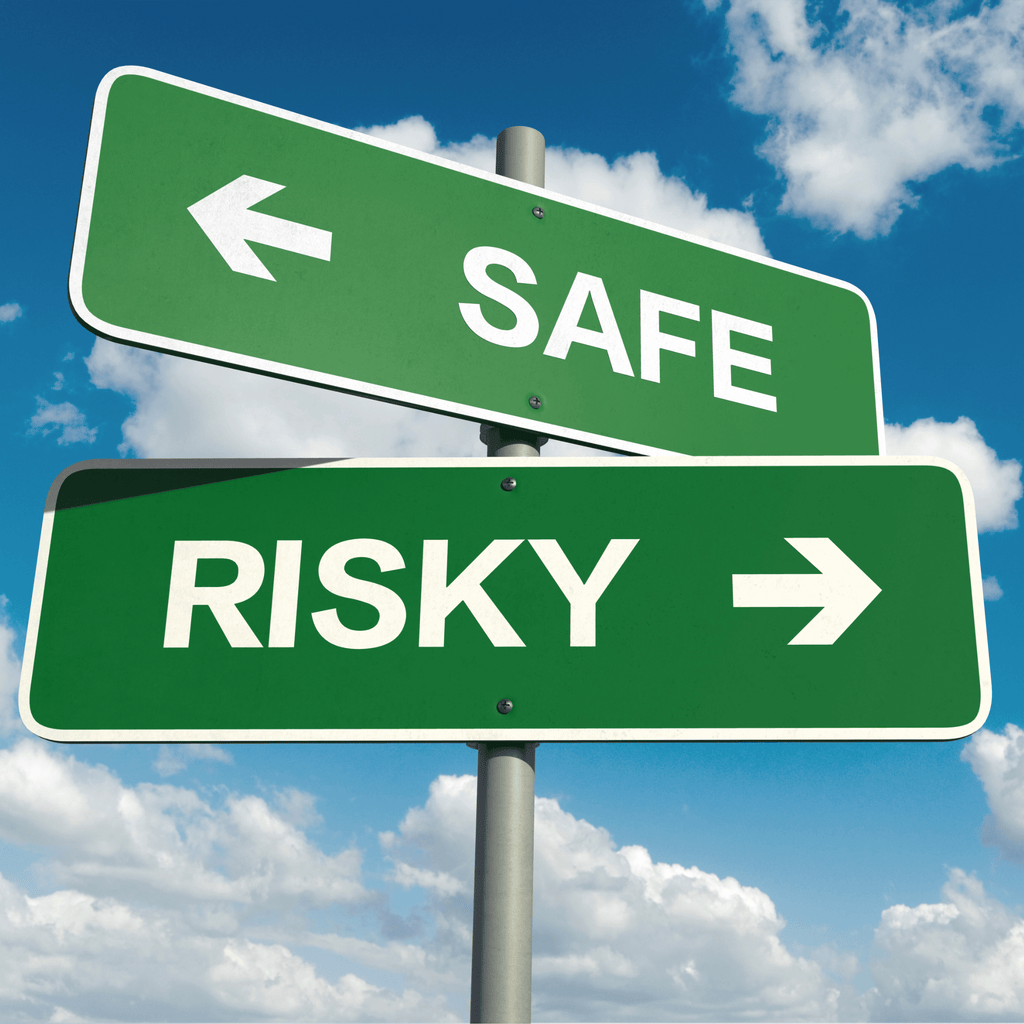
The Importance of Safe Ingredients in Cleaning Products
In today’s fast-paced world, cleaning our homes is an essential routine to maintain a healthy and comfortable living environment. However, the choice of cleaning products we use can significantly impact not only the cleanliness of our homes but also the health of our families and the environment. With a growing awareness of the potential hazards of conventional cleaning products, it’s more important than ever to understand the importance of safe ingredients in cleaning products.
The Hidden Dangers of Conventional Cleaning Products
Many conventional cleaning products contain a variety of chemicals that can pose risks to human health and the environment. These can include:
- Volatile Organic Compounds (VOCs): Commonly found in air fresheners, disinfectants, and cleaners, VOCs can cause respiratory issues, headaches, and even contribute to chronic conditions like asthma.
- Phthalates: Often used in fragranced cleaning products, phthalates have been linked to endocrine disruption and reproductive health issues.
- Triclosan: An antibacterial agent found in many household cleaners and soaps, triclosan can contribute to antibiotic resistance and has been associated with hormone disruption.
- Ammonia and Chlorine: Powerful cleaning agents that can cause skin and eye irritation, respiratory problems, and even chemical burns.
These ingredients can linger in our homes, posing long-term health risks to family members, including children and pets, who are more vulnerable to chemical exposures.
Benefits of Safe Ingredients
- Healthier Home Environment: Safe cleaning products reduce the risk of chemical exposure, ensuring a healthier environment for everyone in the household. This is particularly important for individuals with allergies, asthma, or other respiratory conditions.
- Environmental Protection: Eco-friendly cleaning products are biodegradable and free from harsh chemicals that can contaminate water supplies and harm wildlife. By choosing safe ingredients, we can minimize our ecological footprint.
- Improved Indoor Air Quality: Many conventional cleaners release VOCs that contribute to indoor air pollution. Safe, non-toxic cleaning products help maintain better indoor air quality, promoting overall well-being.
- Gentle on Surfaces: Safe cleaning products are typically gentler on surfaces, prolonging the life of furniture, appliances, and fixtures without sacrificing cleaning effectiveness.
Key Safe Ingredients to Look For
When selecting cleaning products, it’s essential to look for ingredients that are both effective and safe. Some key ingredients to look for include:
- Vinegar: A natural disinfectant that effectively cuts through grease and grime.
- Baking Soda: A gentle abrasive that deodorizes and cleans without scratching surfaces.
- Essential Oils: Natural oils like tea tree, lavender, and eucalyptus not only add pleasant scents but also have antimicrobial properties.
- Plant-Based Surfactants: Derived from renewable resources like coconut or corn, these surfactants effectively lift dirt and grease without harmful residues.
- Citric Acid: Found in citrus fruits, citric acid is excellent for removing hard water stains and soap scum.
Making the Switch to Safe Cleaning Products
Transitioning to safe cleaning products doesn’t have to be overwhelming. Start by:
- Reading Labels: Look for products labeled as non-toxic, biodegradable, and free from harsh chemicals. Certifications from third-party organizations like Green Seal or EcoLogo can also be helpful indicators.
- DIY Solutions: Consider making your own cleaning solutions using simple, safe ingredients like vinegar, baking soda, and essential oils.
- Supporting Eco-Friendly Brands: Choose brands that are transparent about their ingredients and committed to sustainability and safety.
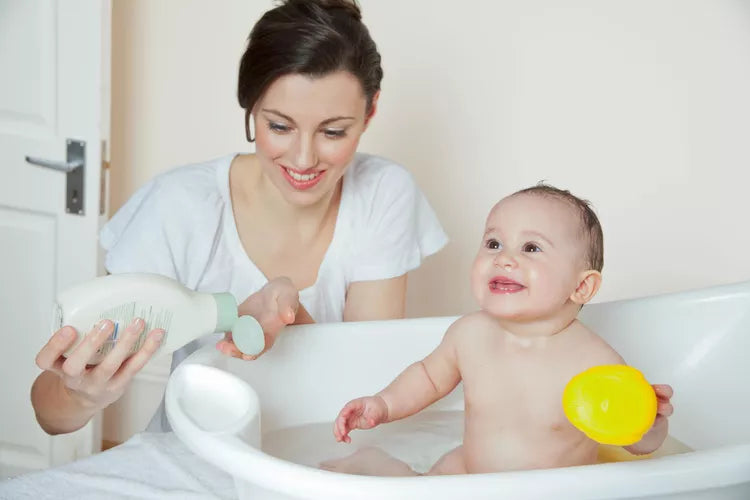
Non-Toxic Soaps for Babies and Children
• Chemical-free soaps minimize exposure to harsh ingredients and promote healthy skin development.
• Look for natural oils, essential oils, and plant-based extracts in non-toxic soaps.
• Avoid sulfates, parabens, synthetic fragrances, and phthalates when choosing a soap for your child.
• Consider fragrance-free options for extra sensitive skin and always do a patch test before using a new soap.

Top 5 Safety Tips for a Sustainable Home
Creating a sustainable home isn't just about being environmentally friendly; it's also about ensuring your living space is safe and healthy for you and your family. By integrating safety with sustainability, you can enjoy a home that's both eco-conscious and secure. Here are the top five safety tips for a sustainable home.
1. Use Non-Toxic Building Materials
When constructing or renovating your home, opt for non-toxic, sustainable building materials. Traditional building materials can contain harmful chemicals like formaldehyde, volatile organic compounds (VOCs), and other toxins that can affect indoor air quality and health. Consider these eco-friendly alternatives:
- Bamboo: A rapidly renewable resource, bamboo is durable and aesthetically pleasing.
- Recycled Steel: Strong and recyclable, it reduces the need for new raw materials.
- Low-VOC Paints: These paints emit fewer volatile organic compounds, improving indoor air quality.
- Natural Insulation: Materials like wool or cellulose are sustainable and safe alternatives to traditional fiberglass insulation.
2. Install Energy-Efficient and Safe Appliances
Energy-efficient appliances not only reduce your carbon footprint but also enhance home safety. Older appliances can be fire hazards due to outdated wiring or malfunctioning parts. When selecting appliances, look for the ENERGY STAR label, which indicates energy efficiency and safety standards. Additionally, regular maintenance is crucial:
- Check for Recalls: Ensure your appliances haven’t been recalled for safety issues.
- Regular Inspections: Schedule periodic inspections to detect and fix potential hazards.
- Smart Home Integration: Use smart plugs and energy monitors to track usage and detect anomalies.
3. Ensure Proper Ventilation
Good ventilation is essential for maintaining healthy indoor air quality. Without adequate ventilation, pollutants can accumulate, leading to health issues such as respiratory problems and allergies. To improve ventilation:
- Install Exhaust Fans: In kitchens and bathrooms to remove moisture and odors.
- Use Air Purifiers: To filter out pollutants and allergens.
- Natural Ventilation: Open windows and doors to allow fresh air circulation when weather permits.
- Heat Recovery Ventilators (HRVs): These systems exchange stale indoor air with fresh outdoor air while recovering heat, maintaining energy efficiency.
4. Embrace Eco-Friendly Pest Control
Traditional pest control methods often involve harmful chemicals that can compromise indoor air quality and health. Opt for eco-friendly pest control strategies to keep your home safe from pests without harmful side effects:
- Natural Repellents: Use essential oils like peppermint, lavender, and tea tree oil to repel insects.
- Integrated Pest Management (IPM): Combines biological, cultural, physical, and chemical tools to minimize risks.
- Physical Barriers: Seal cracks and crevices to prevent pests from entering.
- Eco-Friendly Products: Choose pest control products labeled as safe for indoor use and environmentally friendly.
5. Fire Safety and Sustainable Practices
Fire safety is paramount in any home, and sustainable practices can complement this aspect. Here are ways to integrate fire safety with sustainability:
- Fire-Resistant Materials: Use fire-resistant building materials like stone, brick, and concrete.
- Energy-Efficient Fire Alarms: Install energy-efficient smoke detectors and carbon monoxide alarms.
- Solar-Powered Lighting: Ensure outdoor lighting is solar-powered to provide illumination during emergencies without relying on the grid.
- Proper Disposal: Dispose of flammable materials, like oily rags or chemical cleaners, responsibly to prevent accidental fires.
It's also important to consider premises liability, as maintaining a safe home environment helps prevent accidents that could result in legal liabilities. Ensuring that your home is free of hazards not only protects your family but also visitors, reducing the risk of injuries and associated liabilities.
A sustainable home should not only be kind to the environment but also a safe haven for your family. By incorporating these top safety tips, you can create a living space that is both eco-friendly and secure. Remember, sustainability and safety go hand in hand, contributing to a healthier and more harmonious home environment.
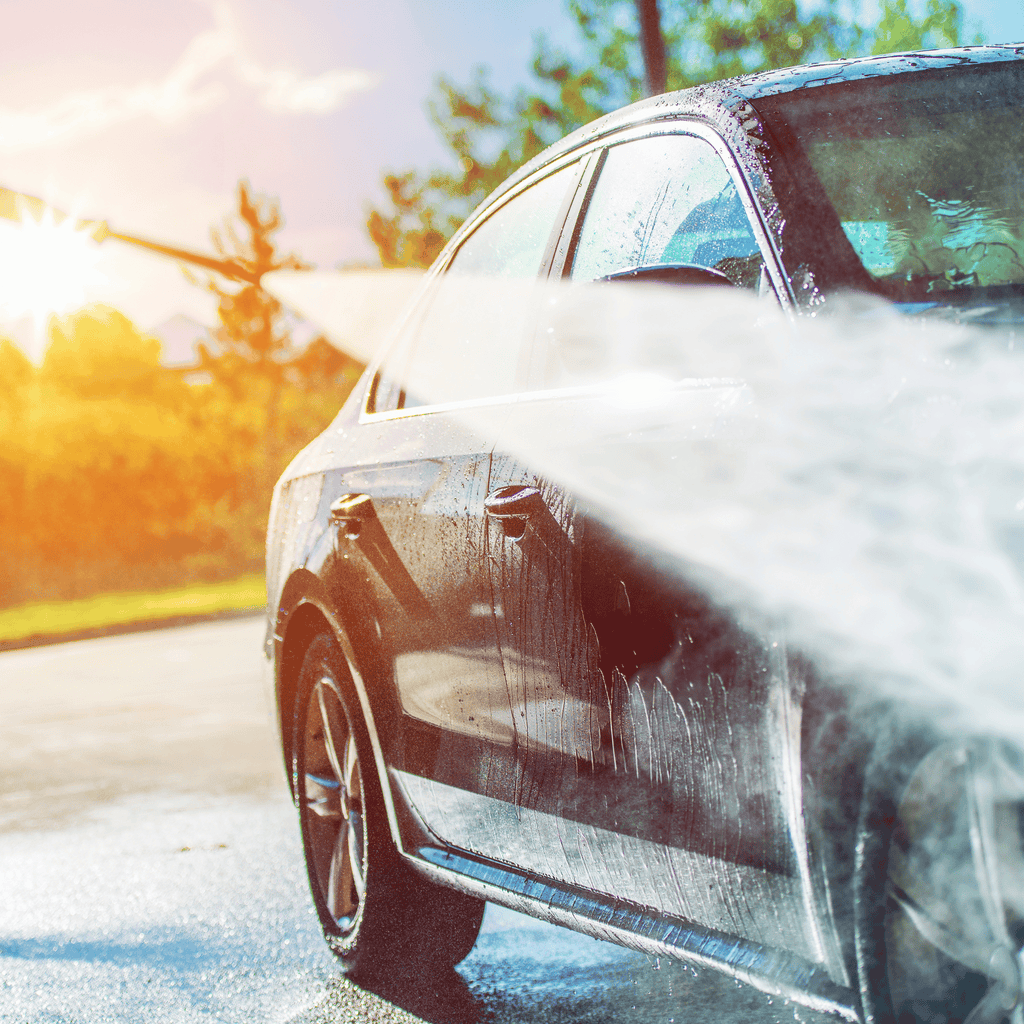
Eco-Friendly Car Washing Tips
Keeping your car clean is essential, not just for appearances but for its longevity and performance. However, traditional car washing methods can have a significant environmental impact. They often use excessive water and harsh chemicals that can harm local waterways and ecosystems. Fortunately, there are eco-friendly ways to wash your car that reduce environmental impact while still giving your vehicle that sparkling clean finish. Remember, maintaining your car not only helps in avoiding costly repairs but also reduces the likelihood of accidents caused by poor vehicle maintenance. If you ever find yourself in an unfortunate situation, consulting a car accident attorney can provide you with the necessary guidance and support. Here are some top tips for eco-friendly car washing.
1. Use Biodegradable Soap
When washing your car at home, opt for biodegradable soap. Regular car wash soaps can contain phosphates and other harmful chemicals that can contaminate groundwater. Biodegradable soaps are designed to break down naturally without causing harm to the environment.
2. Wash on Grass or Gravel
Instead of washing your car on the driveway, which allows dirty water to run into storm drains and eventually into rivers and lakes, wash your car on your lawn or over gravel. The ground can filter out contaminants, and plants can absorb some of the runoff.
3. Use a Bucket and Sponge
A hose can use a lot of water unnecessarily. By using a bucket and sponge, you can significantly reduce the amount of water needed. If you prefer using a hose, consider attaching a trigger nozzle to control the flow of water, so it’s only on when you need it.
4. Try Waterless Car Wash Products
Waterless car wash products are a great option for those looking to conserve water. These products clean and polish your car without the need for water. Simply spray on the product and wipe it off with a microfiber cloth.
5. Choose an Eco-Friendly Car Wash Service
If you prefer taking your car to a professional service, look for eco-friendly car washes. These businesses use water-efficient methods and environmentally friendly cleaning products. Some car washes even recycle water, reducing their overall consumption.
6. Use a Car Wash Mat
A car wash mat can catch the water, soap, and grime that comes off your car, preventing it from running into storm drains. After washing, you can dispose of the water in a way that minimizes environmental impact.
7. Limit the Frequency of Car Washes
Washing your car less frequently reduces water usage and the amount of soap and chemicals that enter the environment. Unless your car is extremely dirty or you live in an area with harsh conditions, consider washing it every few weeks instead of weekly.
By adopting these eco-friendly car washing tips, you can help protect the environment while keeping your car clean. Embrace these green practices, and you’ll be contributing to a healthier planet for future generations while taking care of your vehicle responsibly.


